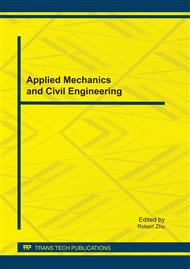p.154
p.159
p.167
p.175
p.181
p.186
p.192
p.198
p.205
Study on Numerical Simulation Analysis of Creep Model for Tianjin Tower
Abstract:
Tianjin tower is the landmark building of Tianjin, and is of out-of-codes super high-rise concrete filled steel tube (CFST)-steel reinforced concrete (SRC) hybrid structure. As to this type of architecture, the impact of creep on the concrete work construction cannot be ignored. Considering the complexity of creep calculation of the integral structure, the simplified creep calculation model will be adopted for the construction simulation in this paper. The comparison with the results of on-site construction monitor shows that the simplified model is reasonable and practical. Additionally the analysis on the impact of creep on CFST structure is made, providing theoretical and practical references for performance evaluation of the structure of Tianjin Tower and the selection and optimization of construction methods of Tianjin Tower.
Info:
Periodical:
Pages:
181-185
Citation:
Online since:
October 2011
Authors:
Price:
Сopyright:
© 2012 Trans Tech Publications Ltd. All Rights Reserved
Share:
Citation:


